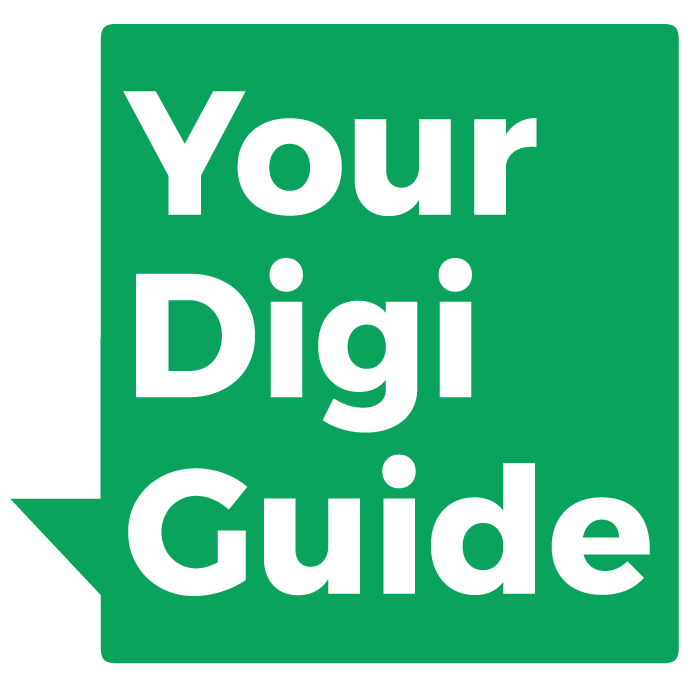Digitalization: The Curse of a Million Tools

Digitalization is much needed and there are many tools to support it. However, the sheer mass and temptation of all those products and services pose a risk as well.
Going digital is vital for and every business. Those who were still doubting this were proven wrong latest during the Corona crisis when there were literally no other ways of doing business than by using digital channels. And be it only to have online meetings or sharing documents.
The time for digitalization is now. And luckily there are many tools out there that can help you transfer your analog processes into digital ones. In fact, many of them are even free. So why not just try them all out? After all, there are so many amazing new features.
The danger of temptation
Well, maybe wait for a second and think first. Because even though many of those tools you come across might sound very tempting in what they promise, they might come with the risk. And I don’t mean that they would be promising you something they can’t deliver. Quite the opposite, they might give you too much.
Wait, what did he just say? How can there be too many cool features? Let me explain. What might happen is that you might fall into the supermarket trap. Just like when you do your grocery trip and end up buying all kinds of products you did not intend to, the same can happen in digitalization.
By browsing through all those available tools you might easily get sidetracked. You might lose the focus on the features and functions you actually really need. This in return could lead to two issues:
Danger 1: Getting the wrong tools
You might end up with a tool or service that offers you many different functions but therefore might not actually be really good at those one or two functions that are crucial for your business.
So, before you decide on a tool, or latest when you try it out, make sure that it can do what you primarily need it for really, really good. If it feels like a compromise in return for some exciting features that you most likely will barely ever use, look somewhere else.
Danger 2: Too many tools
This does not really sound like a danger, does it? And many tools are even free. So why not use them all? Well, because the problems might follow suit fairly soon. First of all, you will need to make sure everyone in your company is trained to use all those tools and switch between different services for different tasks, which takes time and energy. It might cause confusion, frustration and it will cost you actual money. Even if the tool itself was free.
Furthermore, you will need to make sure that your processes are harmonized and that all the tools you use can communicate with each other. You do not want independent systems that do not synchronize or link. Just imagine having two different systems that each uses an individual customer database or calendar. Soon you will completely lose track of what is actually happening and mistakes are bound to happen. Again, this might cost you actual money. Potentially quite a lot of it, if it leads to unhappy customers.
How do I make the right choice?
But how can you avoid those pitfalls and choose the right tools? Of course, there is no easy answer to this question. However, there are a few things you could do to be on the safe side:
1 Develop a clear digitalization strategy
Think about what parts of your business you actually should digitize. What could be done automatically and digitally and what should rather be left to human beings?
Consider what your company’s and team’s strengths are? And ask your customers what they appreciate about doing business with you. Consider how tech-savvy they are and what they would be happy to do online. And how it would their lives easier.
2 Analyze the processes thoroughly
Once you know what you want to digitize, have a closer look at those processes. How do they work in detail? What steps and tools are involved?
The bigger your organization is, the more complex the processes may be. So, find out who deals with the processes in question on a regular, maybe daily basis. Ask those team members for their help. Find out how digital services could help their work to focus their attention elsewhere.
3 List the essential functions
I always recommend our clients to do the following. First, write a list of all the functions the new tool should have. Then assign priorities to them.
1 for essential functions that are an absolute must and that you cannot compromise on.
2 for important functions that you need but where you are willing to compromise. Maybe there sometimes is a different function that could fulfill your needs, just in a different way.
3 for nice-to-have functions that would be a nice extra but that your process is not really dependent on.
Take your time
Following those suggestions will get you much closer to the solution you actually need and that works for you. And they are worth the extra effort. Take your time and thoroughly think through all those points. Saving time at the beginning of the process will almost certainly cost you a lot of time and money at a later stage.
And if you are overwhelmed with all this, give us a shout. We are happy to help with any of the steps mentioned above and any other requests or challenges you face in your digitalization.
